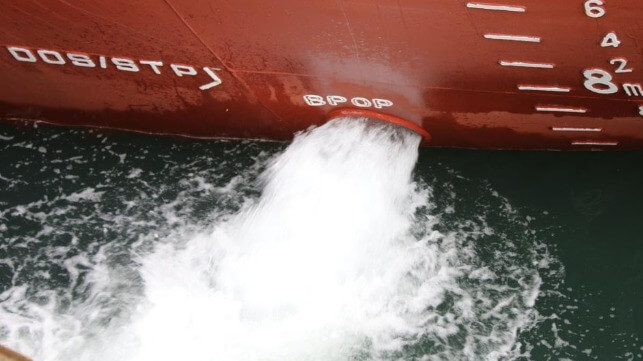Canada Funds More Research on Ballast Water Management

The Canadian government has committed US$8 million to fund research on ballast water management in order to prevent the spread of invasive species in the Great Lakes and the St. Lawrence River.
As shipping activity increases in the Great Lakes-St. Lawrence Seaway system, threats of aquatic invasive species are on the rise. The new arrivals have reduced native biodiversity, impaired fisheries and caused other ecological and socioeconomic impacts in the Great Lakes. The region is now home to nearly 200 non-native aquatic plants, animals and microorganisms.
To deal with the growing problem of aquatic invasive species, Transport Canada is funding four organizations that are undertaking research on ballast water management. The organizations - Albion Marine Solutions, Algoma Central Corporation, Armateurs du Saint-Laurent and Mouawad Consulting Canada LP - will advance industry-led solutions to technical challenges related to the installation, operation and maintenance of ballast water management systems.
The discharge of ballast water has been the leading cause of invasion in the Great Lakes since 1959, when the modern St. Lawrence Seaway was opened to accommodate larger ocean vessels carrying cargo.
Transport Canada says that the Great Lakes and St. Lawrence River region poses technical and operational challenges when it comes to the treatment of ballast water, where water can be cold, fresh and sometimes mixed with sediment. The Ballast Water Innovation Program aims to address these challenges by improving technical expertise for the region's specific conditions.
“By investing to find new ways to manage ballast water, we are protecting biodiversity and ecosystems from invasive species in Canada. We are making marine shipping safer for marine ecosystems, and we're strengthening how we respond to marine incidents through Canada's Ocean Protection Plan,” said Pablo Rodriguez, Transport Minister.
Apart from funding innovative solutions, Canada has also introduced the Ballast Water Regulations aimed at preventing 34 aquatic invasive species from being introduced and spreading in Canadian waters by 2044, including five severely damaging species.
